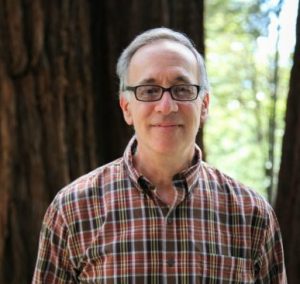Bruce Thompson, is a lecturer in the Departments of History and Literature and the Associate Director of Jewish Studies at UC-Santa Cruz, and also teaches at the Institute. He received his Ph.D. in History from Stanford; his areas of scholarly research include European intellectual and cultural history, French history, British Isles history, American history, American Jewish intellectual and cultural history, the history of cinema, and the history of espionage.
Lectures
Roaring Twenties, Summer 2019
Week 1: Roaring Twenties Introduction
X1RoaringIntro1920s.6.16.19
Week 2: Roaring Twenties, The Presidents
X2RoaringPresidents.6.27.20-2
Week 3 Roaring Twenties Lindbergh
x3RoaringTwentiesLIndbergh
Week 4 Roaring Twenties: Intellectuals
4.roaring.intellectuals.7.18.19.09
Week 5 Roaring Twenties: Prohibition
5.RoaringTwenties.Prohibition2019
Week 6 Roaring Twenties:
BT.Twenties.6.Morality.7.31.1909
Week 7 Roaring Twenties: Henry Ford
BT..Twenties.7.Ford.
Week 8 Roaring Twenties : New York
8.Twenties.NewYork
Week 9 Roaring Twenties: The Crash
BT9RoaringTwentiesCrash2019.09
Summer Spies 2019
JUNE 28: Stalin’s Man in Japan: Richard Sorge
Richard Sorge, unlike so many of Stalin’s most successful spies and moles, did not work against the British or the Americans, but against the Germans, in Japan. In Tokyo, on the eve of WWII, he constructed one of the most successful spy rings in the history of espionage, giving him direct access to the most secret communications of both the Japanese and the Nazi regimes.
X1SpiesManinJapan.6.28.19
JULY 5: Casablanca: An Espionage Hub in North Africa during World War II
The classic Hollywood film got it right: Casablanca was a hotbed of intrigue and espionage during WWII. Jewish refugees, desperate for visas, jostled with Nazi agents and collaborators who were plotting to extend Hitler’s empire. After the city fell to the Allies, it became a key hub for the invasion of North Africa and the first theater of operations for the American OSS.
2.Spies.Casablanca.6.5.19
JULY 12: Code-Breaking at Bletchley Park
By the end of WWII, the British were using the earliest computers to crack German codes. How it was possible for the British to break what the Germans thought was the unbreakable Enigma machine for encrypting radio communications? How did this astonishing British breakthrough in signals intelligence serve as a force multiplier for the Allies against the Axis powers?
X3.SpiesBletchley.7.12.19
JULY 19: Garbo, the Greatest Double-Agent of World War II
Juan Pujol Garcia (whom the British Secret Service named Agent Garbo) was the double agent whose brilliant work enabled the D-Day landings to succeed. Garbo had a vivid imagination and a talent for lying that made him the key figure in an elaborate campaign of strategic deception before and after the Allied assault—and Hitler gave him a medal for his service!
4.Spies.Garbo.7.19.19.09
JULY 26: Mata Hari’s Daughters: Women and Espionage in World War II
Mata Hari, the famous spy of WWI, was an exotic dancer who tried to leverage her love affairs with officers on both sides of the conflict. Tried for treason, she faced a French firing squad. In contrast, the best female agents of WWII were much more successful. Their careers are among the most fascinating, and least remembered, stories of espionage and resistance in WWII.
5.Spies.MataHaris.7.26.19.09
AUGUST 2: Alger Hiss: The Papers in the Pumpkin
Alger Hiss (1904-1996), graduate of Harvard Law School, protégé of Supreme Court justices, president of the Carnegie Founda- tion for International Peace, director of the State Department’s Office of Special Political Affairs, adviser to President Roosevelt at the Yalta Conference of 1945, and one of the American architects of the United Nations, was a spy for Joseph Stalin.
6.SpiesHiss2019.09
AUGUST 9: The Cambridge Five
The Cambridge Five spy ring had one of the longest runs in the history of espionage, providing Stalin with high-grade intelligence from the second half of the 1930s through the beginning of the 1950s. Why did they do it? Why did they emerge from Cambridge, rather than, say, Oxford? How did they do it, and how did they get away with it for so long?
7.CambridgeFive2019.09
AUGUST 16: Atomic Espionage: Karl Fuchs and the Rosenbergs
The trial of Julius and Ethel Rosenberg for espionage is one of the most famous in American history. They were indeed guilty of conveying information about American weapons systems to the Soviets, but their role in the transmission of atomic bomb technology was secondary. Why, then, were they executed, whereas the German scientist Klaus Fuchs, and others, were not?
8.Spies.FuchsRosenbergs
AUGUST 23: Spy-Traitors: Aldrich Ames and Robert Hanssen
Aldrich Ames (CIA) and Robert Hanssen (FBI) are both candidates for the title of “worst spy-traitor since Benedict Arnold.” Long after the golden age of Soviet espionage in the U.S., Russia continued to recruit moles, but now the motive was money. Ames and Hanssen were double agents who sold for millions the names of intelligence officers working against the USSR.
BTX9SpiesTraitors2019.09
Roosevelt Era Summer 2020
Week 1: Landslide
